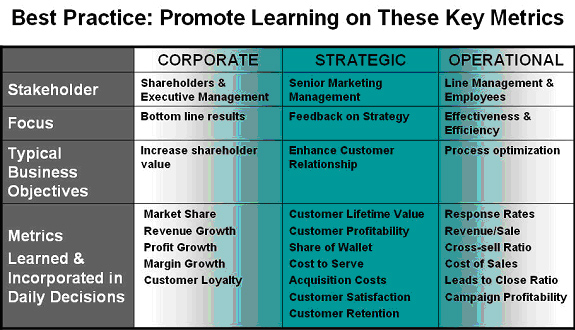 I was speaking recently with the top marketing executive for a very large insurance company–let’s call him Ronald–when the same old theme emerged not more than 10 minutes into our conversation: “We have been investing in CRM and marketing tools heavily and will continue searching for ways to get the returns on those investments. But what really troubles me is how I will prove it. In fact, I can’t show any measure that the rest of our executive team would believe.”
I was speaking recently with the top marketing executive for a very large insurance company–let’s call him Ronald–when the same old theme emerged not more than 10 minutes into our conversation: “We have been investing in CRM and marketing tools heavily and will continue searching for ways to get the returns on those investments. But what really troubles me is how I will prove it. In fact, I can’t show any measure that the rest of our executive team would believe.”
This month, let’s have a look at what we believe to be the most critical first stage to showing returns: predictability. There are two things to take away from this article: 1) The Four Layers of Marketing Measurement almost guarantee predictability. 2) Predictability is achieved through learning by all of your decision-makers.
Take away number one: In 2005 a new theme in the old saga in the search for proving the value of marketing emerged: Demonstrate return on marketing investment. The 2005 Marketing Management Analytics, ANA, and Forrester study on Marketing Accountability revealed that 79% of the marketing executives spending $15 million-$200 million a year thought that measuring marketing’s impact on total sales was now mission critical–yet only 23% felt confident in their forecasts. What’s more, merely 15% agreed that they could even forecast the impact of a 10% reduction in the marketing budget.
Forrester also signaled this new theme in its January 2005 study titled “Where Is Marketing Measurement Heading?”, which reported that 80% of 111 marketing executives cited the ability to act quickly on the results of ROI as their most difficult challenge.
Central to this challenge is that there is no predictability to a financial ROI metric alone. There is no confidence that you can link the tactical underpinnings that actually drive ROI. Stalemate, arguments, and disputes ensue. These “tactical underpinnings” are the multitude of discrete marketing activities that in aggregate are the performance companies are looking for in marketing.
At Quaero we have for more than two years worked to expand the adoption of what we call the Four Layers of Marketing Measurement. Our measurement framework links marketing activities to financial and customer results, thereby creating credibility within the discipline of marketing. This is absolutely a key part of any marketing executive’s toolkit.
 There is no conceivable way that a company can build and scale the Four Layers framework without at least basic resource management, campaign management, and dashboard tools. The good news is that a lot of companies bought these applications. The bad news is that few have figured out how to configure and tune them to achieve reliability, let alone predictability. And few dashboards inform reality or are truly predictive. There has been little learning that has moved across all levels of decision-makers in marketing. Therefore, they didn’t achieve adoption and use of these tools.
There is no conceivable way that a company can build and scale the Four Layers framework without at least basic resource management, campaign management, and dashboard tools. The good news is that a lot of companies bought these applications. The bad news is that few have figured out how to configure and tune them to achieve reliability, let alone predictability. And few dashboards inform reality or are truly predictive. There has been little learning that has moved across all levels of decision-makers in marketing. Therefore, they didn’t achieve adoption and use of these tools.
Take away number two is all about learning. I’d like to share the results from one of our first customers to have fully implemented both the Four Layers and best practices in promoting learning.
One of the largest financial investment services companies in the world began its integrated marketing measurement initiative in 2004. This company measured, forecast, and reliably increased its return on marketing investment by 18% after the first year of execution. By spending less money on fewer but more-effective marketing activities, the company was able to optimize customer profitability and value through highly targeted cross-sell and retention programs. Through a series of experiments, it gained a much deeper understanding of the optimal sequencing of marketing activities and mix throughout the buy cycle and can better optimize the cumulative effect of its marketing efforts against a targeted customer segment. This insight has also increased its share of wallet with the most profitable customer segments by just shy of 15%. Now that is not just results, but more important, predictable results.
Its results were enabled through disciplined learning in this best practice structure:

When Ronald first asked to meet with me, it was to focus on going after the sexy new sources of competitive advantage. I helped him to see that without taking on the first elements of the CMO’s Ultimate Toolkit that build predictability, he’d never convince his company to invest in these new sources of competitive advantage.
Lane Michel is executive vice president/managing director of the Marketing Performance Management business unit of Quaero Corp., a marketing and technology services provider based in Charlotte, NC.
 Network
Network

